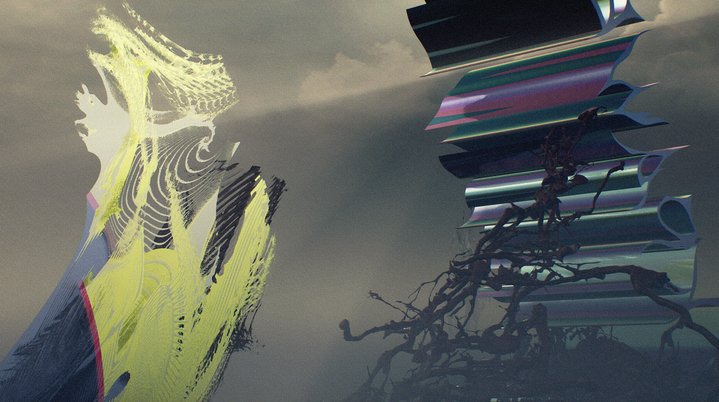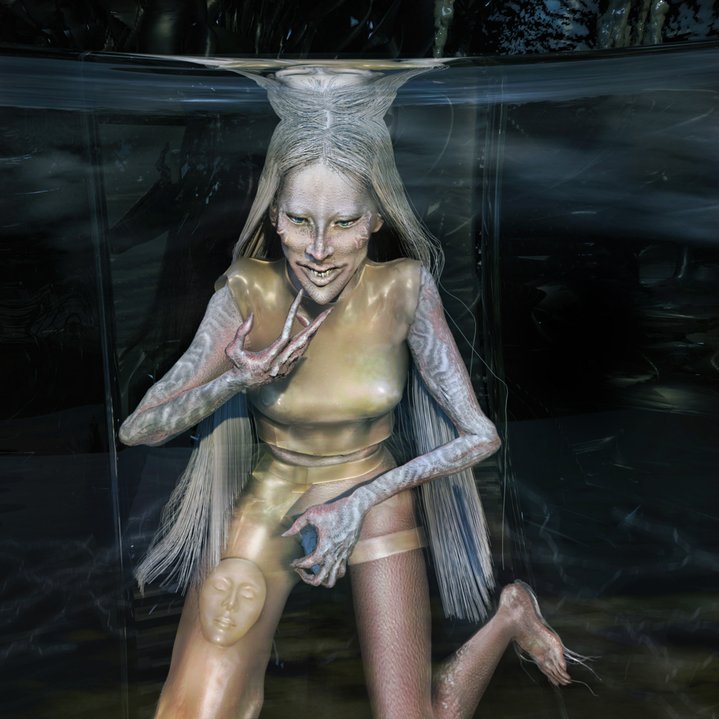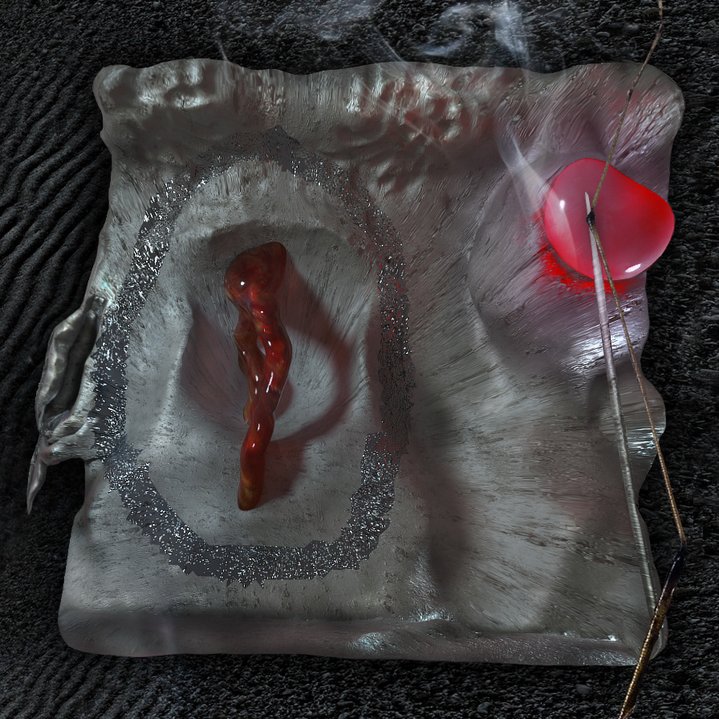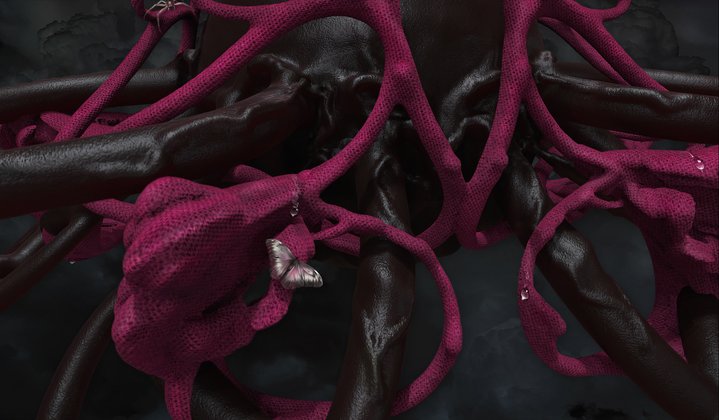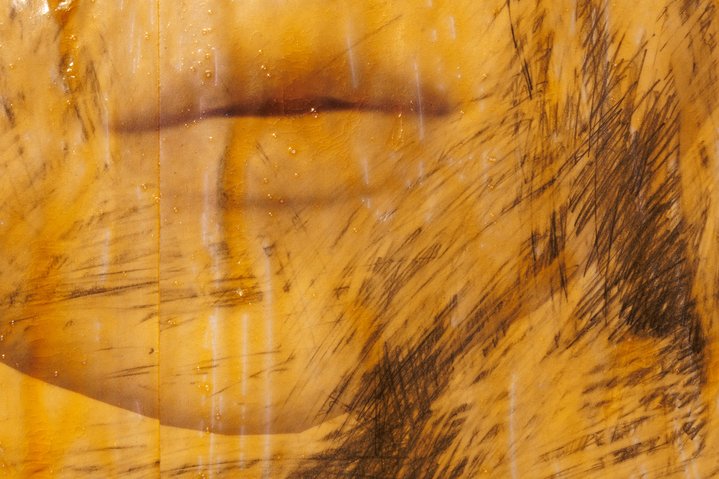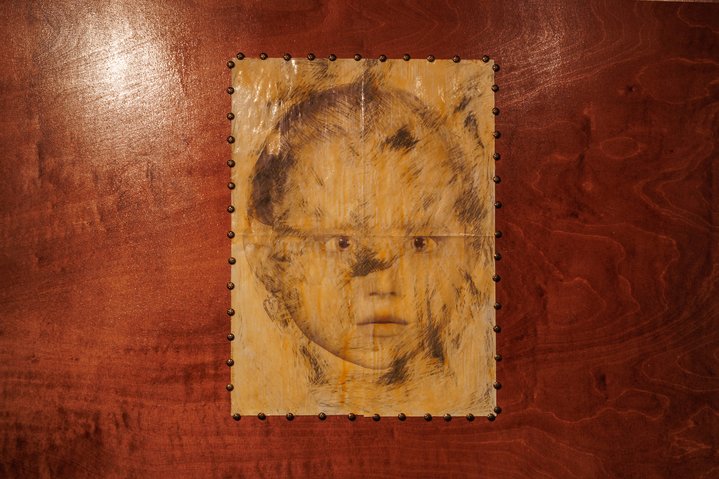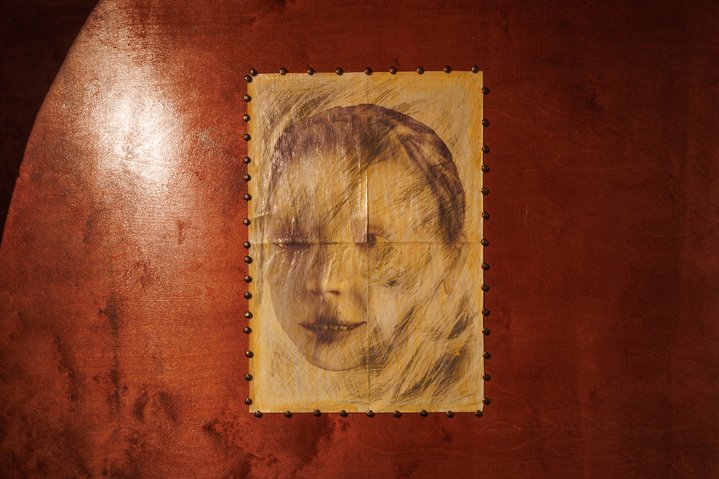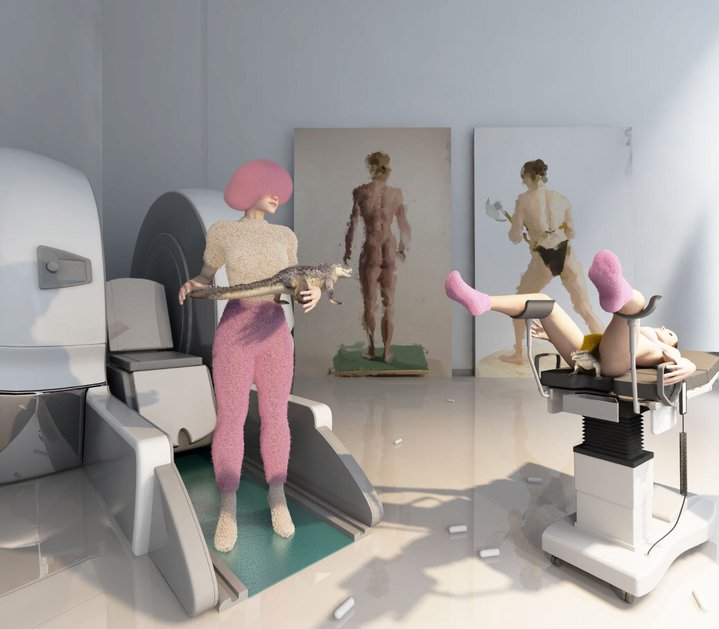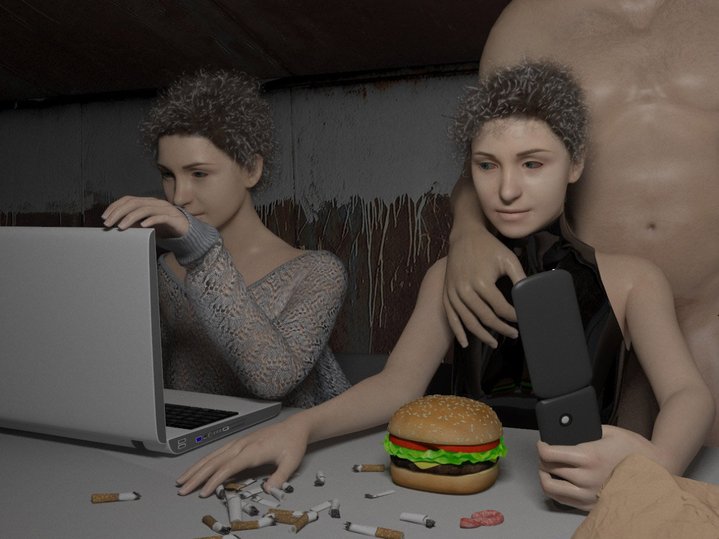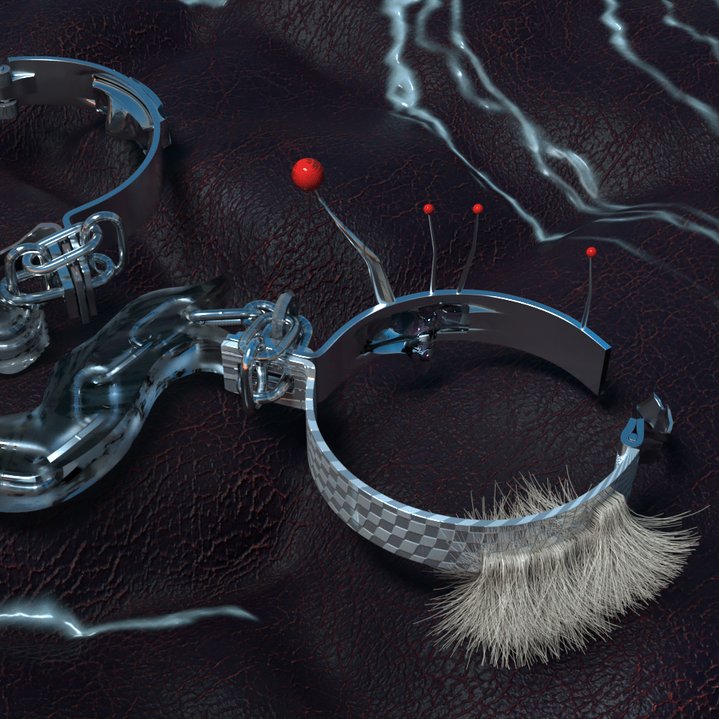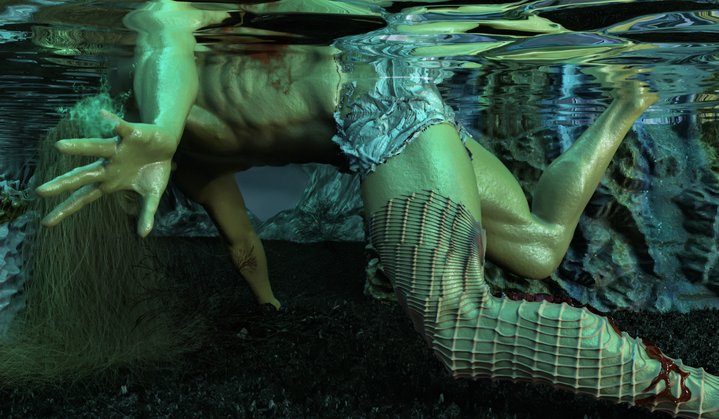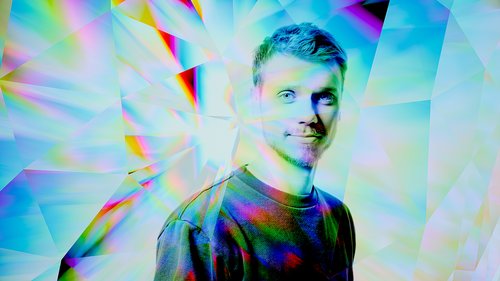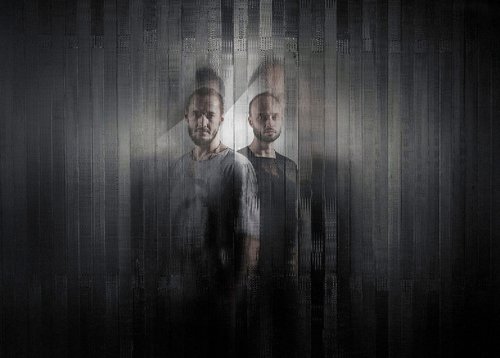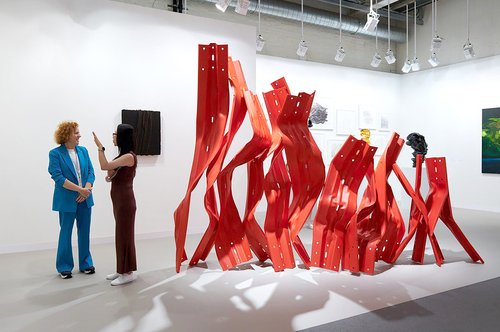Neural Networks in Art: a Tool Too Far?

Kirill Makarov, Xenia Kononenko. In the Salty Sand the Sun Has a Musky Smell, 2020. Fragment of the game. Courtesy of the artists
Increasing numbers of artists all over the world are using neural networks as their preferred medium. Should this be cause for alarm? Young Russian artists and art theorists reflect on this controversial subject.
Debates around the benefits and risks of artificial intelligence have become increasingly confrontational recently. There are those who want to see its innovations spread into all manner of different fields of human endeavour despite the many objections, and those who even demand a moratorium on research into intelligent machines, which they believe threaten the future of mankind. There are some more extreme positions. In an article published in Time magazine earlier this year, Eliezer Yudkowsky, an American technological singularity expert, put forward the idea of an international treaty banning the development of AI, and literally bombing those who violate it. Meanwhile, neural networks, which are considered to be either the incubator or virtually the embryo of true artificial intelligence, are actively being used - as I write this - in all spheres of life, including art.
We are not just talking here about professional artists working with digital media. Students at art schools around the world are actively turning to neural networks to create unexpected sketches that are then finalized and transferred manually to canvases. Such experiments are being encouraged by teachers. Artists who make seemingly very simple things are not afraid of neural networks either. Konstantin Benkovich (b. 1981) creates simple constructions out of metal rods and has used AI to create sculptures based on the same materials. But artists are also finding more sophisticated uses for such software. Kirill Makarov (b. 1988), who started out as a painter, built a neural network that generated new objects and spaces into a game he co-created with poet and psychoanalyst Xenia Kononenko for Cosmoscow in 2020. Called ‘In the Salty Sand the Sun Has a Musky Smell’ players were faced with an ever-changing, self-generating world. Neural networks have become a tool not only for producing work, but also for all the accompanying materials in exhibition curation and art promotion. For example, Slava Nesterov (b. 1989) uses them to make poetic texts for exhibitions and pictures for posters.
"As with any semi-automated algorithm, a large degree of intervention in the process is always necessary," explains artist Nika Peshekhonova (b. 1994) of her production process, an artist who deals with the subject of body transformation. With text-to-image neural networks, words and bundles of words become transforming reagents of sorts. Putting them in a certain way, you design a simulation, change it by adding and removing parameters, and in the process you get glimpses of the intuitive ‘perception’ of a particular neural network model and get ever closer to your desired result. But there is always a large percentage of rejects. Just as photographers take hundreds of shots to select only ten, with neural networks, to get the desired results you often have to generate a lot, picking up piles of cues, anti-cues and manipulating the settings. “After creating and selecting images, I refine certain elements in Photoshop, animate them in video programs, add them to 3D scenes and for me it's just a natural extension, processing with different tools".
The artist clarifies that this process is preceded by coming up with an idea for a project in the first place, with analysis, research and then choice of particular approaches: "Today there are several vectors for an artist to work with visual neural networks. One could create some kind of story in which these simulations would be a way of delivering the narrative. Another option is to work directly with a neural network as a phenomenon or an area of phenomena related to its functioning, such as ethical questions: how does it reproduce certain images and what is behind it? There is also the option of going deeper into it, of toying with the code, ‘breaking’ it, training one’s own models in order to manifest something. And there are even more vectors in working with other, non-visual neural networks, especially when used in conjunction with several of them or in a mix with some software."
Peshekhonova's first experience with neural networks was two years ago, before the advent of Midjourney, Stable Diffusion and others which are in active use today. "At a workshop with Elena Nikonole at the Rodchenko School," the artist recalls, "we experimented with different neural networks, such as StyleGan2 and Clip. They were not as good as the ones used today, but they had a kind of charm. So I made a project in which I collected a large dataset of nude photos of people standing up taken mostly from porn casting sites, trained the StyleGan2 neural network on it, and after getting some very interesting forms of crossed hermaphrodite bodies, made 3D models of them (with another neural network), and placed them in a 3D space I had created so that the image was reminiscent of the opening scene of the porn film. Finally I animated those bodies. In this way they acquired a certain materiality, a digital body, a kind of simulation of gene modification in an unexpected context".
Peshekhonova is also turning to new neural network tools in her practice: "I recently used ChatGPT to write code while working on an object running on Arduino (Ed. a robotic toy construction kit). Now I am doing a project which is an interactive virtual tour consisting of generated rooms with videos inside them, and changing spaces. The idea for the structure of this work came from far-fetched ideas about constantly generated and mutable multi-spaces in which you canroam in VR, and speculation about how our human minds would adapt to them. Or, alternatively, not in VR, but with neurochips so that images would be broadcast directly into the visual cortex of the brain, as from the camera in the recent Neurolink presentation, the main thing is to remember to secure your body to something."
Ekaterina Serikova (b. 1995) often uses random images from the internet in her work, or sometimes she takes photographs from her family archive. "My practice is about my family and personal experiences", explains the artist. "In the process, I became interested in a more global perceptions of which is cute and childlike. I wanted to make the children’s portraits I use more universal and figurative. From the desire for a more 'pure statement’ – ironically more synthetic - came the idea of using neural networks. More specifically, I used generated images with a 3D model effect. The neural network produced a portrait of the child as a rendering of a 3D sculpture. I then translated it into a work on paper, so in the end I added a man-made effect. So, an original portrait was changed several times over. The idea was that the images should be quite 'blurred', the emotions of the children could not be interpreted unambiguously and there should only be a remote sense of being alive, realistic and recognisable. The distance between such images and the viewer should be increased, and the involvement, according to my idea, becomes minimal. So the idea of using a neural network, as it seemed to me, coincided with my task in this project".
However Serikova admits that she started using neural networks relatively recently when she found out about ChatGPT: "Basically I was using it to generate images. But since ChatGPT is more suitable for working with text, I decided to go deeper into the subject and find out if there are any neural networks that work more with picture generation. That's how I discovered both Stable Diffusion and Midjourney, and tried to use them to generate images".
The artist emphasizes that the process of generating images with neural networks is somehow similar to the experience of an artist making a work: "In my practice I often use intuition and randomness. And often that randomness comes out of a mistake that you make during the work. Sometimes such mistakes are useless, but sometimes they are productive, then you can introduce them into your practice and develop them. It would be nice to have a generator of these kind ofmistakes to use in one’s practice. In this sense, a neural network fully performs these functions, you can generate a variety of images. By going through different prompts you can find the best configuration of a necessary image, which will inevitably contain an error, which in turn may help the artist to form new semantic links in the work. But one should not think that this makes the creative process chaotic or random, or that it is imposed in this way by a neural network. It is not like that, the right to choose always remains with the human being, and a neural network no matter how advanced it is now is not capable of making decisions. It still acts according to some patterns and algorithms. A neural network still makes 'silly' mistakes, and this is a striking difference between a machine and a human. It is about variability: a human thinks more consistently and within fewer options. Error (variation) is a kind of element that always gives away this mechanism and prevents it from appearing as close to a human as possible".
Serikova's idea of error is partially supported by Olga Fedorova (b. 1980), known for her post-surrealist digital 3D paintings, who introduced neural networks into her artistic practice two years ago. She used them to generate new images, experimenting with style and form; making NFTs with them. "Neural networks offer new possibilities for self-expression, speed up the process of working on a piece – and they're also imperfect," the artist claims. "They make mistakes and generate content that can be unexpected, and that's why I love them. Now there will be more hybrid forms in art, combining traditional and digital elements thanks to neural networks”. However, Fedorova stresses that this remains a narrow niche for now.
Critic Anastasia Haustova (b. 1993) admits to being genuinely surprised by the controversy flaring up around AI: "When some defend its possibilities and benefits, while others deplore its soullessness and economic unreliability, I see it as just a tool. If one perceives AI this way, there should be no problem with the issue of its use in art – all the arguments about the medium have never been able to supplant painting, and to make claims about an artist using a canvas and paint is silly, to say the least. Yes, artificial intelligence is more complex – it can be unpredictable, it is self-learning, it argues with our exceptionalism, but it still invents the unicorn – that is, it combines the horse with a straight horn, which in nature are already given. Of course neural networks have potential in every field, but for me as a critic the most interesting question is whether AI can create something fundamentally new, because that is one of the main challenges of art. As long as artificial intelligence only compiles what exists, it cannot compete with human intelligence, for which the invention of concepts is the same medium. And if, in anyone's mind, it can, it makes one wonder how it is that we are so worried that someone will take our ' medium-specificity' away from us. So it's not about artificial intelligence per se, it's about how the creator uses it."
Natalya Serkova (b. 1988), an art theorist, believes that "we can now observe a certain resurgence in artists using neural networks to create fully or partially generated images. Here, as in other cases in general, the neural network acts as a tool whose work is triggered by one or another user's request. The artist has to form an "entry point": a set of words or sentences from which a neural network will produce an image. The result, obviously, cannot be predicted in advance, it isa kind of adventure for the viewer. A neural network provides its own 'understanding' (should we put that word in quotes today?) of the data set coming to it, but the process is guided by a human being at the outset.
“For me, this is not much different from an artist using the various computer programmes we are already familiar with: AI has for some time now been built into the same Photoshop, which makes retouching and other, more in-depth image processing much easier. For now, the neural network is only capable of pouring over a certain, albeit very large, amount of data, compiling it into one configuration or another. The question is whether it will one day be able to think like a human, that is, to add some extra element to already known data, in other words, to think creatively. After all, it is precisely this surplus element that makes it possible to create art, which, in essence, is always about the process of producing new meanings that did not exist before. Until this surplus element in AI is discovered, to speak of it in the context of art (whether creating works of art, exhibitions or texts) will, in my view, only be at the level of the techniques of any other technical medium like painting, photography or digital collage (I really hope that an evolved artificial intelligence stumbling across this comment of mine does not one day come to my browser to graphically show how wrong I was)."
For many people this last concern is a serious ethical issue. While Serikova does not believe that AI will be able to reach the level of human beings anytime soon, she does see the possibility that it, as a species of creature, could be capable of supplanting humans in the future. According to her reading of Darwin's theory, it is not necessarily the most intellectually advanced but the strongest creature that survives, and so AI need not be similar to humans in terms of thinking. "Right now, humans act as teachers of neural networks," the artist elaborates on this thought, "but sooner or later AI will be able to train itself. And then it may supplant humans altogether to sustain existence. That's not a scenario I like very much, so I think we should listen to popular opinion and put restrictions on the development of neural networks". And indeed, the US Screenwriters Guild, as well as online illustrators, have recently protested against the use of such software, or at least for restrictions on their actions. Serikova supports this approach: "This is important and the right thing to do. Different communities need to sort out how much influence AI should have on their sphere, to avoid a situation where neural networks dominate everything, so they do not destroy the economy, the distribution of labour and money between people."
Artist Alexander Plusnin (b. 1981), who has used neural networks in his work and has encouraged other artists to use them as a curator, asks for caution rather than fear: "I'm OK with neural networks, if they can be used without harming anyone. As far as art is concerned it is more of a decorative application. It is now all about imitation. As a craft, it is about speeding up the conveyor belt for the prodution of content. This is a problem for artists of digital content: some have lost their jobs, while others have benefitted by learning to use neural networks as steroids. But on the whole it is about lowering the cost of labour. At some point, artists who, like Frank Herbert in Dune, will become mentalists able to produce something without relying on access to data and the manufacturing power of computing. But before that can happen, the speed of AI will devalue many." Neural networks do their best to please and to be useful, complains Plusnin… unlike artists!
Nesterov believes that fears neural networks could replace human beings are groundless, "They will replace only those people who are not able to work with them. It is still just a tool."
Peshekhonova has a balanced view of the issue: "Although many people are not aware of this, neural networks are already radically changing the world in many areas, and mainly in scientific and technological developments, chemistry, medicine, not to mention social media. In future this influence will be multiplied, and changes will then become evident. And whether a particular development becomes a cure or a weapon depends on people's motives. Let's hope it learns it and adapts it for safe use”.
This text was translated from Russian into English by deepl.com, a neural-network-base online translation tool, and subsequently edited by humans for accuracy and style.






